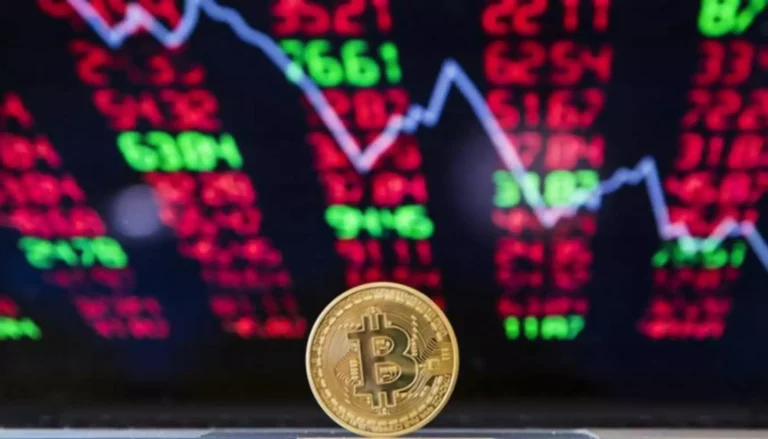With market making, you can trade pairs for high trade volumes and low spreads, attracting more brokers and investors and generating a higher trading volume. Taking the number of markets into account, the second exchange turns out to be more liquid, despite the fact of lower trading volumes. After each successful cryptocurrency token exchange on the platform, a price adjustment will take place. Some examples of these different AMMs are Curve, Uniswap, and Balancer. The price feed should aggregate prices from all the relevant exchanges and from the Forex market in real-time.
- He is committed to helping enterprises, as well as individuals, thrive in today’s world of fast-paced disruptive technological change.
- The following article examines the leading crypto liquidity providers and analyzes their services, enabling you to make an informed decision.
- Liquidity crises can be triggered by large, negative economic shocks or by normal cyclical changes in the economy.
- The modular pooling protocol of Balancer serves as its foremost strength.
- Instead, they rely on self-executing smart contracts to facilitate trading.
- But what factors affect cryptocurrency liquidity and why does liquidity of crypto matter at all?
No matter the currency you wish to offer your traders, with LXCapital you can offer them the best price at any given moment, with minimum slippage and zero gaps. Liquidity providers (LPs) are those people who add funds to a crypto liquidity pool. A liquidity pool is a large amount of money that traders can trade against. In exchange for providing liquidity to the protocol, LPs receive fees from trades that occur within their pool. B2Broker creates a liquid market through several distribution systems giving investors and brokers access to the deepest institutional liquidity pools.
How to Find a Crypto Liquidity Provider in 2023?
Smaller pools are more vulnerable to market swings, which might result in a drop in the value of your tokens. Banks, financial institutions, and principal trading firms (PTFs) all act as liquidity providers in today’s markets. In this scenario, your DAI would earn interest and fees in Curve’s crypto liquidity pool.


For instance, Curve only contains assets that hold the same or very similar values, including stablecoins like USDC and DAI or different wrapped versions of the same underlying asset, like wBTC and sBTC. The term “pumping” liquidity provider meaning is used to indicate the purchasing of large quantities of coins to push the demand and price of respective coin up. Then, they release the assets at a higher price to rake in a high return on investment.
Upgrade Your Blockchain Skills with 101 Blockchains
Today, you can “farm for yield” — maximize profits — by moving LP tokens in and out of different DeFi apps. Owners simply execute a smart contract to let the LP tokens be farmed. In this case, users will usually receive rewards in the form of another token. This process involves a higher degree of trust from the owner, as issues with the smart contract could put the deal in peril.
So next, we will find out how to make the best choice when selecting a liquidity provider. Market makers not only provide liquidity and build market оrder book depth but also increase trading volume and achieve other goals by means of executing aggressive trading strategies at a specific price level. Every crypto project or exchange once took its first steps into the crypto world. For almost all, liquidity providers have become a kind of guide or assistant.
Crypto Markets
This stake will be set at an equal rate between the two exchanging tokens. Cryptocurrency liquidity providers play an important role in the trading of cryptocurrencies within a Decentralised Finance or DEFI market. These liquidity providers pour crypto-asset funds into a ‘pool’ that other traders can use to conduct cryptocurrency swaps on the platform. Providers can also generate a passive income based upon fees charged to users of the pool. DAI/ETH on Uniswap is one popular decentralized cryptocurrency exchange that uses a liquidity pool.
At the same time, the LP token from the liquidity pool earns you CRV tokens as a reward for staking. By using LP tokens, your liquidity works double-time — earning fees and farming yields. With liquidity provider tokens, the same tokens can be utilized multiple times, even if they are invested in a DeFi product or staked in a platform governance mechanism. LP tokens help solve the problem of limited crypto liquidity by opening up an indirect form of staking, one where you prove you own tokens instead of staking the tokens themselves. The term refers to how easily one asset can be converted to another without causing a drastic change in the asset’s price. In traditional finance, cash is seen as the most liquid asset, because you can easily exchange it for gold, stocks, bonds, and other assets.
Factors Affecting Liquidity
The liquidity of crypto assets is the main financial indicator that reflects the interest of traders and investors in buying or selling (trading) a particular financial instrument. For crypto exchanges, this indicator is derived from market makers, investment organizations and trading companies, and institutional investors (such as hedge funds and large banks) who have extensive holdings. Brokerage firms rely on them to execute trades quickly on the floor to benefit other market participants and clients. With roots in market making and as one of the most recognized https://www.xcritical.com/s, GSR employs a programmatic execution to client needs using its proprietary trading technology.
Decentralized exchanges, or DEXs, are peer-to-peer platforms where transactions can be made directly between crypto traders. DEXs are a way to facilitate financial dealings that aren’t officiated or regulated by any intermediary, such as banks, brokers, and other financial institutions. Naturally, two of the largest factors with an influence on liquidity for digital currencies are market capitalization and daily volume. The volume levels a crypto asset has generally correlated to the number of people that are actively interested in buying and selling it. Market cap is also indicative of the popularity of a crypto coin and how much has already been invested into it.
What to Consider When Choosing a Liquidity Provider
DeversiFi protocol supports public and private cryptocurrency wallets for depositing funds in the native DeversiFi STARKEX smart contract. Traders can leverage the smart contract for facilitating off-chain transactions alongside maintaining on-chain balance. The native token of the protocol, i.e., NEC, helps in carrying out these activities.
Government regulations can have a huge effect on liquidity, especially on a geographical level. If fiat onramps are restricted, as they are in India and China, for example, crypto assets will have less liquidity in those regions. Some nations, such as Japan and South Korea, have restricted the use of anonymous crypto assets such as Monero and Dash for fears of money laundering.
Factors Influencing Liquidity
Investors have confidence that token developers won’t run off with liquidity money. If you have contributed crypto assets that are worth $100 to a pool that is worth $1000, you own 10% of the liquidity pool. Because of this, you are entitled to 10% of the LP tokens of that liquidity pool. The LP tokens allow the use of the same tokens multiple times regardless of whether they are staked in a platform governance scheme or invested in a DeFi product. The indirect form of staking that LP tokens allow can help solve the problem of limited crypto liquidity pool. This method prioritizes the proof of ownership rather than staking LP tokens themselves.
You are unable to access coingecko.com
You’ll be able to determine from the information you obtain how well the provider is being watched and what kind of oversight they are subject to. Additionally, you can see if the provider has any information about compliance with regulations on its website. Contact them directly if you have questions about the provider’s compliance policies.
Trading Volume
Aave is an open-source, non-custodial money market platform that offers a variety of debt-based products in a decentralized fashion. Cryptopedia does not guarantee the reliability of the Site content and shall not be held liable for any errors, omissions, or inaccuracies. The opinions and views expressed in any Cryptopedia article are solely those of the author(s) and do not reflect the opinions of Gemini or its management. The information provided on the Site is for informational purposes only, and it does not constitute an endorsement of any of the products and services discussed or investment, financial, or trading advice.
